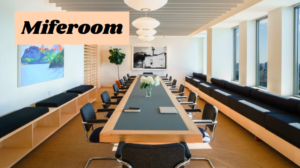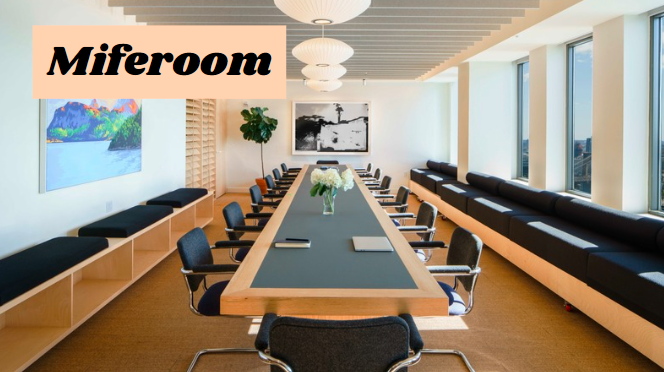Peñiculs, a term that might not be familiar to many, refers to culturally significant decorative objects that are deeply rooted in history and tradition. These artifacts are not only aesthetically pleasing but also serve as a window into the rich cultural heritage of various communities.
This article aims to delve deep into the world of peñiculs, exploring their origins, craftsmanship, and the role they play in preserving history. By understanding the significance of peñiculs, we can appreciate their value beyond mere decoration.
What are Peñiculs?
Peñiculs are decorative objects that hold significant cultural value. These items are often intricately designed, reflecting the artistic skills and cultural expressions of their creators. Peñiculs can range from household items to ceremonial artifacts, each piece telling a story of its origin and purpose.
Origins and Definition
The term “peñiculs” is derived from ancient languages, indicating objects of beauty and cultural importance. Historically, peñiculs were created for various purposes, including religious ceremonies, celebrations, and as symbols of status and identity within communities.
Varieties of Peñiculs
Peñiculs come in various forms and designs, depending on the cultural background and the intended use. Some common types include:
- Ceremonial Peñiculs: Used in rituals and ceremonies.
- Household Peñiculs: Decorative items for everyday use.
- Symbolic Peñiculs: Representing social status or cultural identity.
The Historical Significance of Peñiculs
Peñiculs have played a crucial role in the history of many cultures. They are more than mere decorative objects; they are a testament to the traditions, beliefs, and artistic achievements of the communities that created them.
Ancient Origins
The history of peñiculs dates back to ancient civilizations, where they were used in various aspects of life. From religious artifacts in ancient temples to decorative items in royal households, peñiculs have been integral to human history.
Cultural Narratives
Each peñicul tells a story. The designs, materials, and craftsmanship reflect the cultural narratives and historical events of the time. For instance, a peñicul from a particular era might depict scenes of everyday life, significant events, or mythological stories, providing insight into the culture and beliefs of that period.
Preservation of History
Peñiculs serve as historical records, preserving the artistry and cultural practices of bygone eras. They offer a tangible connection to the past, allowing us to understand and appreciate the cultural heritage of different communities.
Craftsmanship and Design
The creation of peñiculs involves a high level of craftsmanship and attention to detail. The designs are often intricate, with each element carefully crafted to convey specific meanings or aesthetic appeal.
Materials and Techniques
Peñiculs are made from a variety of materials, including wood, metal, ceramics, and textiles. The choice of material often depends on the cultural context and the intended use of the peñicul. Traditional techniques, passed down through generations, are employed to create these exquisite objects.
Artistic Expression
The design of peñiculs reflects the artistic sensibilities of their creators. Patterns, colors, and motifs are chosen to represent cultural symbols, natural elements, or abstract concepts. The artistry involved in making peñiculs is a testament to the creativity and skill of the artisans.
Innovations in Craftsmanship
While traditional methods remain important, modern innovations have also influenced the creation of peñiculs. Contemporary artisans often blend traditional techniques with new materials and technologies, resulting in unique and innovative designs.
Cultural Impact and Preservation
Peñiculs hold significant cultural value, serving as a means of preserving and promoting cultural heritage. They play a vital role in maintaining cultural identity and passing down traditions to future generations.
Role in Cultural Identity
Peñiculs are often seen as symbols of cultural identity. They represent the unique characteristics of a community and are used to celebrate cultural heritage. By preserving and showcasing peñiculs, communities can maintain a strong sense of identity and pride in their cultural heritage.
Preservation Efforts
Efforts to preserve peñiculs involve both individual and collective actions. Museums, cultural organizations, and collectors play a crucial role in preserving these artifacts. Conservation techniques are used to ensure that peñiculs remain intact and can be appreciated by future generations.
Challenges in Preservation
Preserving peñiculs comes with challenges, including the risk of damage, loss, or theft. Ensuring the proper care and security of these valuable objects is essential to preserving cultural heritage. Additionally, raising awareness about the importance of peñiculs can help garner support for preservation efforts.
Peñiculs in Modern Times
In contemporary society, peñiculs continue to hold relevance, serving as both cultural artifacts and sources of inspiration for modern design.
Contemporary Uses
Today, peñiculs are used in various contexts, including home decor, fashion, and art. Their aesthetic appeal and cultural significance make them popular choices for modern design elements. Contemporary artisans often draw inspiration from traditional peñiculs to create innovative and unique pieces.
Influence on Modern Design
Peñiculs have influenced modern design in many ways. Designers often incorporate traditional motifs and techniques into their work, creating a fusion of old and new. This blending of styles results in fresh and exciting designs that pay homage to cultural heritage while embracing contemporary trends.
Cultural Exchange
The global appreciation of peñiculs has led to increased cultural exchange. As people from different backgrounds discover and appreciate these artifacts, they foster a greater understanding and respect for cultural diversity. This exchange of ideas and traditions enriches the cultural landscape and promotes cross-cultural connections.
Collecting and Valuing Peñiculs
Collecting peñiculs is a rewarding endeavor that offers insights into cultural heritage and artistic achievement. Understanding the value of peñiculs involves considering their historical significance, craftsmanship, and cultural context.
Factors Affecting Value
Several factors influence the value of peñiculs, including:
- Age: Older peñiculs are often more valuable due to their historical significance.
- Craftsmanship: High-quality craftsmanship adds to the value of peñiculs.
- Condition: Well-preserved peñiculs are more valuable than those in poor condition.
- Rarity: Rare peñiculs are often more sought after by collectors.
Tips for Collectors
For those interested in collecting peñiculs, here are some tips:
- Research: Learn about the history and significance of peñiculs from different cultures.
- Authentication: Ensure that peñiculs are authentic by consulting experts or obtaining certificates of authenticity.
- Preservation: Properly care for and preserve peñiculs to maintain their value.
- Networking: Connect with other collectors and experts to share knowledge and insights.
Ethical Considerations
Collecting peñiculs comes with ethical responsibilities. It is important to ensure that artifacts are acquired legally and ethically. Supporting efforts to preserve and promote cultural heritage is essential to maintaining the integrity of peñiculs.
The Role of Peñiculs in Education
Peñiculs offer valuable educational opportunities, providing insights into history, culture, and art. They serve as teaching tools that can enhance our understanding of cultural diversity and heritage.
Educational Programs
Many museums and cultural organizations offer educational programs focused on peñiculs. These programs often include workshops, lectures, and interactive exhibits that provide hands-on learning experiences. By engaging with peñiculs, participants can gain a deeper appreciation for cultural heritage and artistic expression.
Incorporating Peñiculs into Curricula
Educators can incorporate peñiculs into school curricula to teach students about history, art, and culture. Lessons on peñiculs can include discussions on their significance, the craftsmanship involved, and their role in preserving cultural heritage. These lessons can help students develop a broader understanding of the world and its diverse cultures.
Promoting Cultural Awareness
By studying peñiculs, individuals can develop greater cultural awareness and appreciation. Understanding the cultural context and significance of peñiculs fosters respect for cultural diversity and promotes inclusivity. This awareness is crucial in creating a more connected and empathetic global community.
FAQs about Peñiculs
What materials are commonly used to make peñiculs?
Peñiculs can be made from a variety of materials, including wood, metal, ceramics, and textiles. The choice of material often depends on the cultural context and the intended use of the peñicul.
How can I authenticate a peñicul?
Authenticating a peñicul involves consulting experts, obtaining certificates of authenticity, and researching the item’s history and provenance. It is important to ensure that the peñicul is acquired legally and ethically.
Are peñiculs only found in certain cultures?
Peñiculs are found in various cultures around the world. Each culture has its unique designs, materials, and techniques for creating peñiculs, reflecting its artistic sensibilities and cultural narratives.
How can I preserve my peñiculs?
To preserve peñiculs, it is important to handle them with care, avoid exposure to extreme temperatures and humidity, and store them in a safe, secure environment. Regular cleaning and maintenance can also help preserve their condition.
Can peñiculs be used in modern home decor?
Yes, peñiculs are often used in modern home decor. Their aesthetic appeal and cultural significance make them popular choices for adding unique and meaningful design elements to contemporary interiors.
Conclusion
Peñiculs are more than just decorative objects; they are cultural artifacts that offer a glimpse into the history, artistry, and traditions of various communities.
By appreciating and preserving peñiculs, we can maintain a connection to our cultural heritage and promote greater understanding and respect for cultural diversity.
Whether you are a collector, an educator, or simply someone interested in cultural heritage, peñiculs provide a rich and rewarding avenue for exploration and appreciation.





















+ There are no comments
Add yours